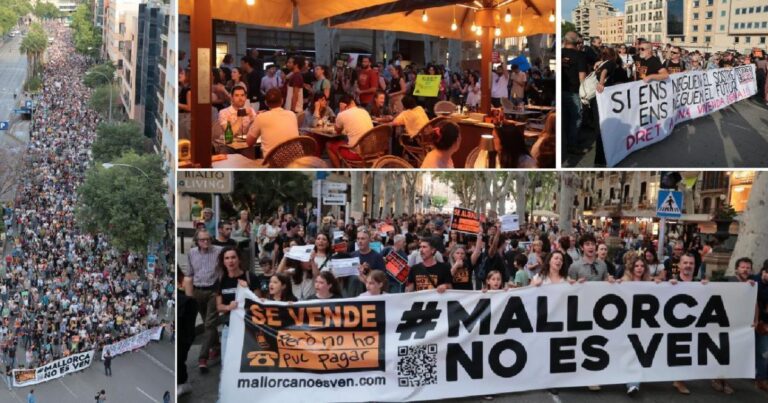The debate and protests have not changed, the factors have simply intensified.
Strange. Or maybe not. In August 2007, the Mallorca Daily Bulletin published an article about a survey that revealed that residents of Mallorca and other islands felt that there were too many tourists in the summer. Too many tourists led to overcrowding and saturation. Records show that 17 years ago, Mallorca attracted 9.9 million tourists, but by 2023 this number is expected to reach 12.5 million (figures from the Balearic Islands Ministry of Tourism).
That year, the coalition government, then led by Francesc Antić of the Socialist Workers’ Party, presented the “Plan Tourism 2020”. Its objective was to increase added value. The declared goal was “fewer tourists, more revenues”. Of course, Antić could not have predicted the pandemic and the virtual absence of tourists in 2020. But what became of this plan? No one knows. Perhaps it fell into the black hole of the Ministry of Tourism, a vacuum created by having four tourism ministers between 2007 and 2011, two of whom were destined to ponder the plan in prison for several years.
Or maybe it was just political quackery, a reaction to what happened in March 2007. Who remembers this? Some of you may remember. There were protests. Until the demonstrations (estimated 100,000 people) against José Ramón Bauza’s education policies in September 2013, the protests of 17 March 2007 were the largest ever in Mallorca. Around 50,000 people participated.
One thing that stands out about the protests from the archive documents is that foreign media coverage was mainly German, one example being the front page of the Berliner Zeitung newspaper: “Goodbye, Mallorca. 50,000 Mallorcans demonstrate against tourists. Why don’t they like us anymore?”
This protest was portrayed as anti-tourism, but it was not exclusively about tourism. The protest, which took place a few weeks before the local elections, was against the policies of the Popular Party government led by Jaume Matas. These policies were about land. So it was partly about tourism, but not only. Water resources were another issue. So, like the protest of 10,000 people a few weeks ago, the focus was not only on tourism, even if it was reported.
The land was also about housing. Around the same time that Antich announced Plan Turismo, he was trying to strike a deal with a developer to build “thousands of homes.” One way to do that was to “build upwards.” High-rise apartment buildings would mean more housing at a lower price. At least, that’s what he thought.
Seventeen years later, the debates and protests remain the same, only intensified and intensified to some extent by a factor that wasn’t there in 2007: the basic web traffic requirement for the media. Of course, there have been news stories about tourism in Mallorca, and there have been in the past, but not on the scale that they are today.
But it would be simply wrong to claim that the current anxiety, or even the anxiety of 2007, is an exclusively 21st-century phenomenon. Let’s look back to a Bulletin report from June 1967. On the 24th of that month, Swiss national Maria Steiner and her husband Roger received a pleasant surprise: Maria was the one millionth tourist to arrive at São Sant Joan airport that year, and so they were awarded a free two-week holiday in Palma.
Of course, we are talking about the Franco era, when Manuel Fraga was minister of information and tourism. The millionth tourist was cause for celebration; Fraga would have made it so. But even then, there were rumors that undermined the perception that criticism was not tolerated. It was allowed as long as writers kept themselves away from certain targets, especially Franco himself.
Josep Alfonso Villanueva was to become a Balearic member of parliament for the PSOE when a democratic government was formed in 1983. He began his career as an economist in the mid-60s and wrote a socio-economic analysis of the hospitality industry in general in 1969. The conclusion he drew was that there should be a limit on the number of tourists.
A 1967 article called for the creation of a university to study the sociological effects of mass tourism. It was argued that universities should help ensure social equilibrium, with culture and socio-economics as their primary concerns. There were also concerns about water resources (there was no proper planning for their use) and the uneven distribution of wealth from tourism. The paper contained a subtle critique of the Opus Dei technocrats who had engineered Spain’s “economic miracle”. The last thing they cared about was a fair distribution of wealth.
The University and the Tramuntana Reservoir were born in the following decade. The University has made important contributions to the understanding of tourism, but the social balance has not been sufficiently addressed. This has many implications that explain why we are in the situation we are in today, and why citizens are now able to exercise a right that was denied to them in 1967: the right to protest.

